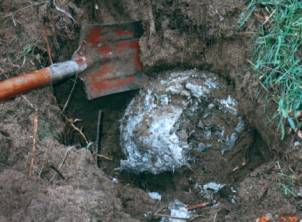
26th January, Australia Day, and its time to check that hive attacked yesterday by robber bees after being returned from an out-apiary.
The entrance has already been reduced by a half, but that has not been enough and skirmishes are still occurring on the landing board. So now I reduce the entrance further to 2cm, with wire mesh used to block the remainder of the entrance while still providing ventilation in this hot weather. 
But what’s this big black fly doing, briefly attacking a lone bee on the side of the brood box then flying off? The bee appeared unharmed. Other flies of the same variety are hanging around a number of hives, darting around like robber bees in front of entrances and occasionally alighting on the landing board or (harmlessly?) assaulting isolated bees. I capture a few of these flies to take back to Canberra for identification.
Michele and I then watch a Willy Wagtail use various hives as launching pads for short flights as it caught and swallowed some bees.
Then I find the first European Wasp of the season in front of one hive, dissecting a dead bee. Now, the odd Willy Wagtail and big black flies are not going to cause any significant trouble to the bees, but European Wasps will. Although European Wasps will be visible dissecting dead and dying bees then flying away with the resultant parts, they will also attack healthy bees and enter beehives to steal honey and pupae. European Wasp assaults on colonies will cause the bees to divert a considerable amount of effort away from brood rearing and honey gathering into defending the hive.
The most frequently given advice on handling the European Wasp problem promotes the use of wasp traps, commonly involving plastic drink bottles and various foul smelling baits. I consider these a waste of time! If wasp traps capture a few stray wasps, or even a few hundred wasps over time, the outcome may give you a warm feeling inside but it wont help the bees. European Wasps live in large colonies of thousands, much like bees. A loss of few hundred would be neither here nor there.
What will help the bees will be to reduce the hive entrance size, making wasp entry more difficult, and to destroy the wasps in their own nests. Around my apiary the wasps have, fortunately, restricted themselves to nests in the ground, in old rabbit warrens or holes at the base of old dead trees. Finding the nests requires luck and perserverance. Being hassled by wasps warning you off while you walk in the area around the apiary is often the means by which you can locate wasp nests close to the apiary. Observation of wasp flight paths from your hives, from dead animals, and from trees from which they collect wood to make the paper fabric of their nest combs, will lead you to more distant nests.
The final localisation of your search is best done in full sunlight, preferably with the suspect location between you and the sun. Sunlit wasp wings flying to a focus point is an obvious indication. Under the right conditions it is not unusual to see sunlit wasps approaching their nest up to 50 metres away.
Once the nest is located the next step is to plan for your assault late at night after the wasps are settled in the nest. All nests I have seen have had only one entrance, about 4cm in diameter. After dark, dressed in full protective gear, including gloves, invert a stubby of petrol into the nest entrance and lightly jam the bottle in the hole to prevent wasps emerging before the fumes take full effect. Do not light the petrol !! Let the fumes do the work. Two days later, remove the bottle and fill the entrance in, or dig the nest out to see what havoc you have wrought and to be amazed at the size of the nest. If the wasp nest location is such that the use of petrol could be hazardous, then one of the proprietary wasp poisons (such as Baygon Insecticidal Powder) should be used.
My tally last year was eleven European Wasp nests within 250 metres of the apiary before wasps ceased pestering my bees. Even then I do not really know whether it was my efforts or the coming of winter that shut down the wasp activity. However, in a location 20 km away, all European Wasp activity ceased for a year after I poisoned just one single wasp nest in a hole under the hedge around a farmhouse in January last.
Photo: Unearthing a European Wasp nest that included hundreds of new queens ready to disperse and start new nests
Happy hunting !
Paul Hooper

Be the first to comment